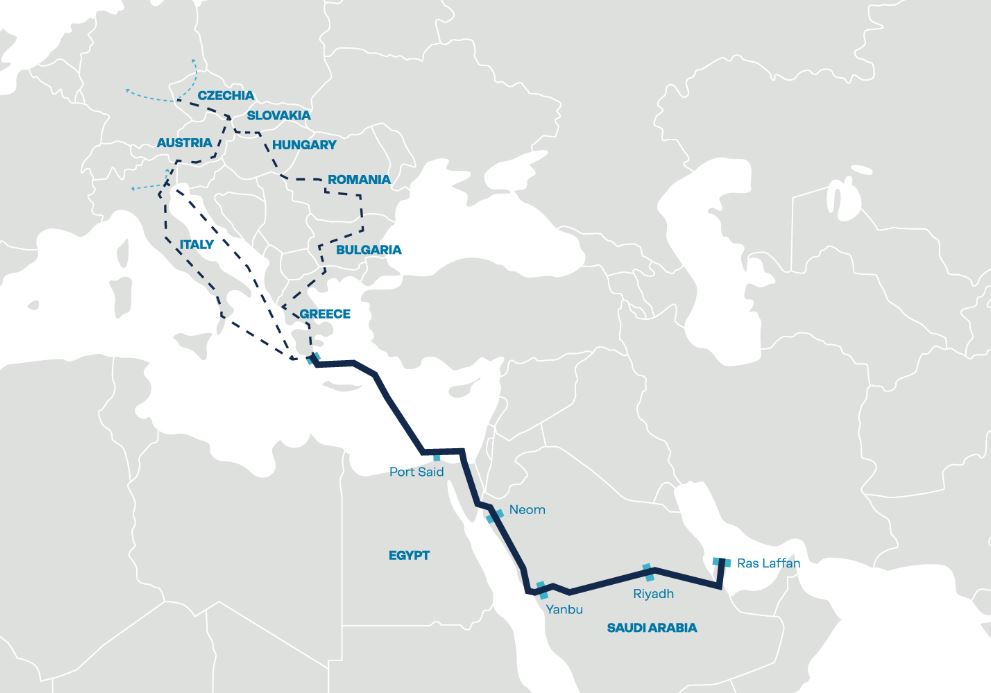Europe – RINA and AFRY have conducted a first investigation into how the Gulf area and Europe could be directly linked via a pipeline to carry low-carbon hydrogen, a critical component in future climate-friendly energy and industrial systems.
The findings point to a game-changing chance to fully realize the Gulf’s enormous potential as a practical supply of low-carbon hydrogen for Europe.
Although the idea of a hydrogen pipeline running through Egypt, Saudi Arabia, and Qatar before crossing the Mediterranean Sea and arriving in Europe may seem grandiose, preliminary analysis suggests it is feasible. According to the calculations, a feasible pipeline architecture could move 100 TWh, or around 2.5 million tonnes of hydrogen per year. Moreover, the transit capacity might be greatly increased by building other pipes of the same kind.
Initial estimates place the price of moving hydrogen through this pipeline at about 1.2 EUR/kg H2. In turn, the Gulf nations could provide green and blue hydrogen to the center of European commerce for Levelized Costs of Delivered Hydrogen (LCODH) of around 2.7 EUR/kg beginning in the 2030s and falling to approximately 2.3 EUR/kg over time.
Alternative options
Recent geopolitical challenges have compelled Europe to look into alternate options for energy security, such as building a pipeline to connect Europe and the Eastern Mediterranean, which was looked into for the EastMed Natural Gas project. At the same time, the topic of shipping molecules from the Gulf to Europe for the export of hydrogen and the products of its synthesis is currently being discussed. These solutions encourage development in the gas and hydrogen industries and are supported by the EU, but they might not be the most effective for bulk transportation. In the near future, a competitive and actionable pipeline project from the Gulf region might offer a strong and useful complement.




